
Sectional sofas have become a popular choice for many homes, offering both comfort and flexibility in how you arrange your living space. Among the various colors available, brown sectional sofas stand out as a versatile and timeless option. In this guide, we’ll explore why a brown sectional sofa might be the perfect addition to your living room, how to choose the right one, and tips on making it work with your decor.

Sectional sofas are like puzzle pieces for your living room. They come in separate sections that you can arrange in different ways to fit your room’s shape and size. Here are some reasons why people love them:
Choosing a brown sectional sofa can add warmth and style to your living room while offering these practical benefits. Let’s dive deeper into how to find the right one for your home.
Choosing a brown sectional sofa involves considering several factors to ensure it fits perfectly in your living space and meets your needs:
Choosing the right material and design style ensures your brown sectional sofa not only fits your practical needs but also enhances the aesthetic of your living room.

Brown sectional sofas come in various styles to suit different preferences and room layouts:
Understanding these different styles and designs will help you choose a brown sectional sofa that not only fits your space but also enhances your overall living room decor and functionality.

modern leather sofa set
The choice of material for your brown sectional sofa can significantly impact its durability, comfort, and maintenance requirements. Here are some popular material options to consider:
Choosing the right material for your brown sectional sofa depends on your lifestyle, aesthetic preferences, and maintenance capabilities. Consider these factors carefully to ensure your sofa remains comfortable and attractive for years to come.

Proper maintenance ensures your brown sectional sofa remains in top condition for years to come. Here are essential maintenance tips:
By following these maintenance tips, you can ensure your brown sectional sofa remains comfortable, attractive, and functional for years to come.
Choosing a brown sectional sofa for your living room is not just about adding a piece of furniture; it’s about enhancing your living space with comfort, style, and practicality. Brown sofas, with their warmth and versatility, can serve as the perfect centerpiece for various decor styles, from modern to traditional.
Throughout this guide, we’ve explored the benefits of sectional sofas, considerations for choosing the right brown sofa, popular styles and designs, and maintenance tips to keep your sofa looking its best. Whether you opt for leather, fabric, or velvet, the key is to find a sofa that fits your lifestyle and aesthetic preferences. Remember, your living room is more than just a space—it’s a reflection of your personality and a place for relaxation and socializing. With the right brown sectional sofa, you can create a cozy and inviting atmosphere that you’ll love coming home to.

In today’s workplaces, conference rooms play a crucial role in fostering collaboration and innovation. With the shift towards more flexible office setups, modular conference room tables have become increasingly popular. Let’s explore why they are a smart choice:

Modular conference room tables are versatile furniture pieces designed to adapt to various meeting needs. They come in different shapes and sizes, allowing easy rearrangement to accommodate different group sizes and meeting formats.
The shift towards modular conference room tables is driven by their numerous advantages over traditional fixed furniture. From enhancing collaboration to optimizing space usage, these tables offer a range of benefits that cater to modern office demands.
When choosing modular conference room tables, consider factors like the size of your space, preferred table shapes (rectangular, round, or modular shapes), and materials that match your office aesthetics and durability requirements. Integration with technology, such as cable management systems, should also be considered for seamless meetings.

When it comes to outfitting your office’s conference rooms, the choice of furniture plays a crucial role in shaping the environment for productivity and collaboration. Modular conference room tables offer a versatile solution, available in various types to cater to different meeting needs and office layouts. Let’s explore the different types of modular tables that can transform your meeting spaces into hubs of creativity and efficiency.
Choosing the right modular conference room table depends on your office’s layout, the type of meetings conducted, and the desired level of flexibility and collaboration. Each type offers distinct advantages that can contribute to creating a productive and adaptable workspace environment.

Choosing the right modular conference room table involves considering several factors to ensure it meets your office’s specific needs. From space requirements to technological integration, understanding these considerations will help you make an informed decision that enhances your office environment.
Modular conference room tables offer a flexible, cost-effective solution for modern workplaces aiming to optimize space and enhance collaboration. By choosing the right table based on office needs and considerations, companies can create dynamic meeting spaces that support productivity and innovation.

In today’s busy world, many of us spend a lot of time sitting at desks. That’s why having a comfortable computer chair is so important. It’s not just about looks; it’s about how well the chair supports your body while you work or play games. A good chair can help you sit in a way that’s better for your back and overall comfort. In this guide, we’ll explain what makes a chair comfortable, what features to look for when you’re choosing one, and we’ll review some of the best chairs out there. Whether you’re setting up a home office or a gaming area, our goal is to help you find a chair that makes sitting for long periods more comfortable and healthier for you.
When searching for a comfortable computer chair, several key features can make a significant difference in your sitting experience:
Choosing a computer chair with these features ensures not only immediate comfort but also long-term benefits for your posture and overall health. By prioritizing ergonomics and adjustability, you can create a workspace that supports your well-being and enhances productivity.

The Style chair by Meet&Co Office Furniture is designed with ultimate comfort in mind. Featuring a sleek ergonomic design, it offers great lumbar support to maintain proper spine alignment and reduce lower back strain. The breathable mesh back keeps you cool, while the contoured seat with high-density foam provides firm yet comfortable support. Adjustable armrests and a synchro-tilt mechanism enhance customization, ensuring you can find the perfect position for long hours of work or gaming.

The Meet&Co Budding Chair combines plush comfort with ergonomic functionality. Its padded seat and backrest upholstered in high-quality fabric provide a modern feel, while the ergonomic design supports natural body posture. The ergonomic office chair offers adjustable lumbar support and armrests, allowing you to personalize your seating experience for optimal comfort. Whether you’re typing away at your desk or relaxing during a video call, the Budding chair ensures you stay comfortable and supported throughout the day.

Designed for breathability and flexibility, this high-back office chair features a breathable mesh back that promotes airflow and keeps you cool. Its lightweight yet sturdy frame make it suitable for a wide range of users. The chair offers adjustable lumbar support and a seat depth adjustment, ensuring a tailored fit. With its intuitive synchro-tilt mechanism and adjustable armrests, the chair provides both comfort and functionality for extended periods of sitting.

Engineered for durability and comfort, the Meet&Co executive chair boasts a robust design with a heavy-duty base and smooth-rolling casters. Its ergonomic backrest with integrated lumbar support helps maintain spine alignment, while the contoured seat with memory foam padding molds to your body for enhanced comfort. The chair’s adjustable height and armrests accommodate various users and tasks, ensuring ergonomic support throughout your workday.

The Meet&Co UltraSupport chair is designed to provide exceptional support and comfort for long hours of sitting. Featuring a high-back design with plush padding and a headrest, it offers comprehensive support for your entire back and neck. The chair’s lumbar support enhances comfort, while the breathable mesh back keeps you cool and comfortable. With its sturdy construction and ergonomic features, this chair is an excellent choice for anyone seeking maximum comfort and support in a computer chair.
Choosing the right computer chair involves considering several factors to ensure it meets your specific needs and preferences:
Choosing the most comfortable computer chair is essential for maintaining good posture, enhancing productivity, and preventing discomfort during long hours of sitting. By prioritizing ergonomic design, adjustability, and comfort features such as lumbar support and breathable materials, you can create a workspace or gaming setup that promotes overall well-being. Whether you opt for the sleek design of the Meet&Co Budding chair or the plush comfort of the Meet&Co Style chair, each model reviewed offers unique features to cater to different preferences and needs. Remember to assess your specific requirements and try out chairs if possible before making a decision. With the right computer chair, you can enjoy enhanced comfort and support, making your work or gaming experience more enjoyable and productive.

In the bustling world of business, conference rooms serve as hubs of collaboration, decision-making, and presentations. The furniture you choose for these spaces plays a crucial role in creating a conducive environment that enhances productivity and leaves a lasting impression on clients and employees alike. As we navigate through 2024, let’s explore the essential considerations and trends when selecting conference room furniture.
Before diving into the myriad options available, start by understanding the unique requirements of your conference room:

Ergonomics is about designing furniture and workspaces that promote health and productivity by fitting the physical needs of the human body. When it comes to conference room furniture, here’s what to keep in mind:
The aesthetic appeal of your conference room furniture should align with your company’s brand identity and the overall ambiance you wish to create:
Today’s conference rooms are more than just tables and chairs; they are hubs for technological collaboration. Here’s how to seamlessly integrate technology into your furniture choices:

Investing in durable conference room furniture pays off in the long run. Consider the following factors to ensure your furniture stands the test of time:
Budget considerations are crucial when selecting conference room furniture. Here’s how to make the most of your investment:
As businesses increasingly prioritize sustainability, choosing eco-friendly conference room furniture becomes paramount:
Before making a final decision, gather insights from others who have experience with the furniture you’re considering:
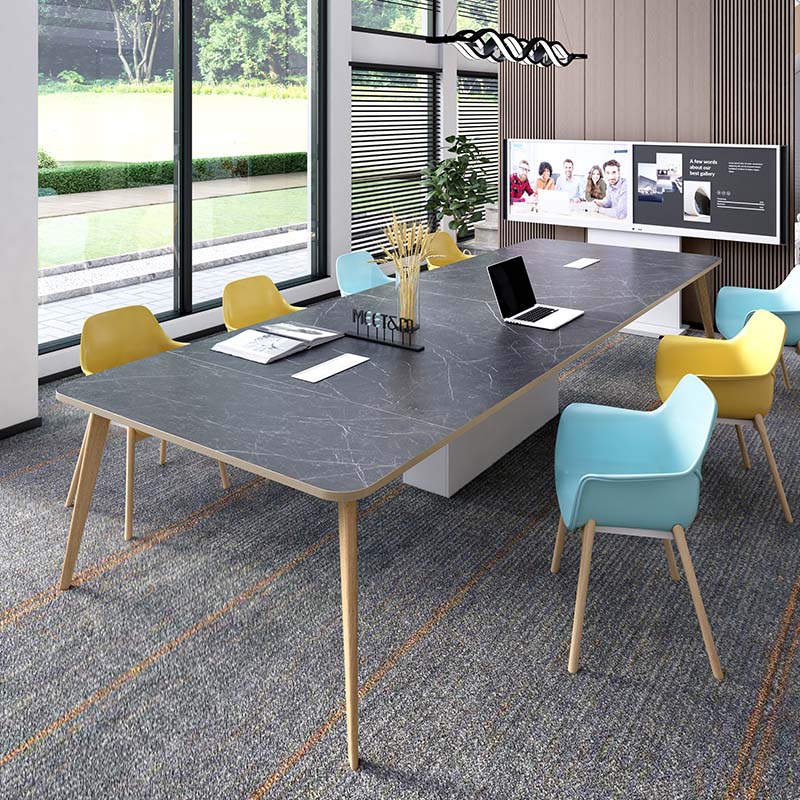
Tailoring conference room furniture to your specific needs enhances functionality and reinforces your brand identity:
With careful planning and consideration, you’re ready to finalize your conference room furniture choices:
Choosing the best conference room furniture in 2024 involves a blend of practicality, style, and foresight. By assessing your needs, prioritizing ergonomic comfort, aligning with your company’s aesthetic, integrating technology thoughtfully, ensuring durability, managing your budget wisely, making sustainable choices, gathering user feedback, exploring customization options, and finalizing your selection diligently, you can create a conference room environment that enhances productivity and leaves a positive impression on all who enter.
Ready to transform your conference room into a space that inspires collaboration and productivity? Assess your current furniture needs, explore our modern conference room furniture, and consult with experts to make informed decisions. Whether you’re upgrading an existing space or designing a new one, investing in the right conference room furniture sets the stage for success in 2024 and beyond.

A comfortable computer chair isn’t just about relaxation—it’s crucial for your health and productivity, especially if you spend long hours at your desk. Sitting for extended periods can strain your body, leading to backaches and fatigue. That’s why finding the right chair matters. In this guide, we’ll explore what makes a great computer chair for long hours, why it’s essential for your well-being, and how to choose one that fits your needs perfectly. Whether you work from home, game for hours, or study intensively, the right chair can make a significant difference in how you feel and perform each day.

best computer chair for long hours
A good computer chair isn’t just about comfort—it’s essential for your health and productivity, especially if you spend long hours sitting. Poor posture and discomfort can lead to back pain, neck strain, and decreased focus. An ergonomic computer chair supports your body’s natural alignment, reducing strain on your muscles and joints. By investing in a quality chair, you can improve your posture, enhance circulation, and minimize the risk of long-term health issues associated with prolonged sitting. A well-chosen chair isn’t just a luxury—it’s a smart investment in your well-being and efficiency at work or play.
Using a proper computer chair designed for long hours offers several significant health benefits:
Choosing a computer chair with ergonomic features tailored to your needs and preferences is crucial for reaping these health benefits and maintaining comfort and efficiency throughout your workday.

Mee&Co Office Furniture Ergonomic Office Chair
When selecting a computer chair designed for extended use, consider these essential features to ensure comfort and support:
By prioritizing these features when selecting a computer chair, you can create a comfortable and ergonomic workstation that supports your health and productivity during long hours of sitting.
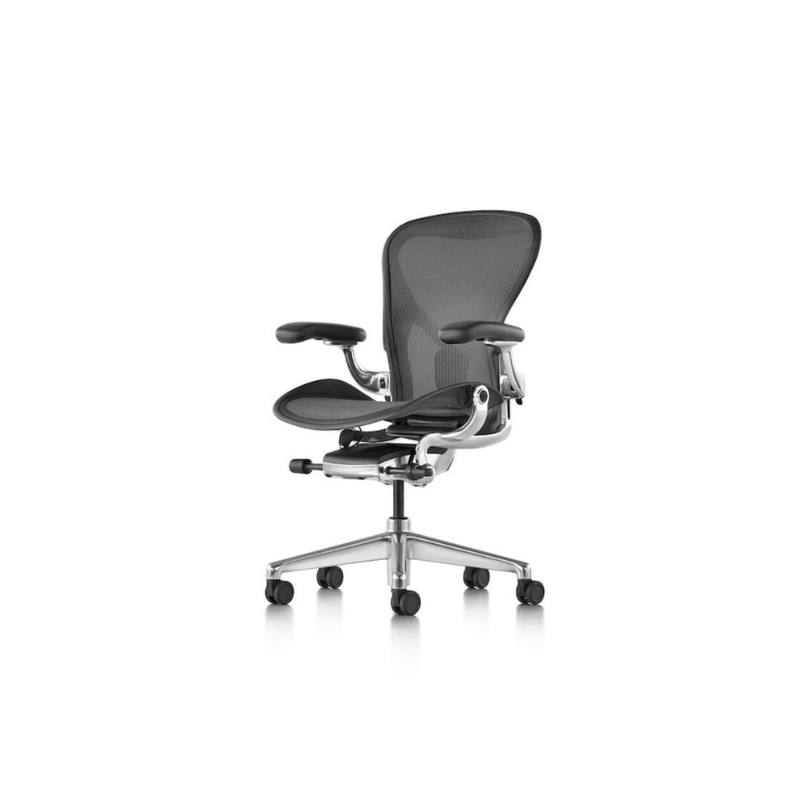
Herman Miller Aeron Chair
The Herman Miller Aeron Chair stands as a pinnacle of ergonomic design and comfort, renowned for its ability to support prolonged sitting with unparalleled ease. Crafted with a breathable mesh that promotes airflow and adjustable lumbar support, it ensures optimal spine alignment and reduces strain. Its tilt mechanism allows for customizable reclining positions, catering to individual preferences. While its premium price tag may be a consideration, the chair’s durability and comprehensive 12-year warranty make it a long-term investment in ergonomic excellence.
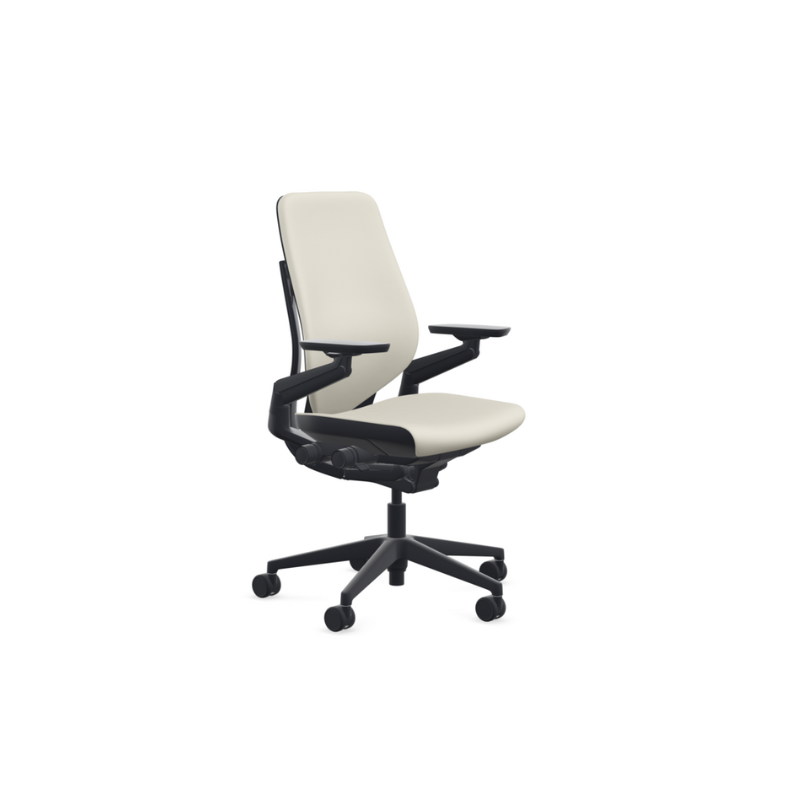
Steelcase Gesture Chair
The Steelcase Gesture Chair excels in adaptability, featuring highly adjustable armrests that intuitively mimic natural arm movements, promoting comfort and reducing strain on the shoulders and wrists. Its seat depth adjustment and integrated lumbar support accommodate a wide range of body types, enhancing ergonomic support. Built with durable materials and comfortable padding, it provides lasting comfort suitable for extended work sessions. However, its larger size may not be ideal for smaller individuals, and its higher cost reflects its advanced ergonomic features.
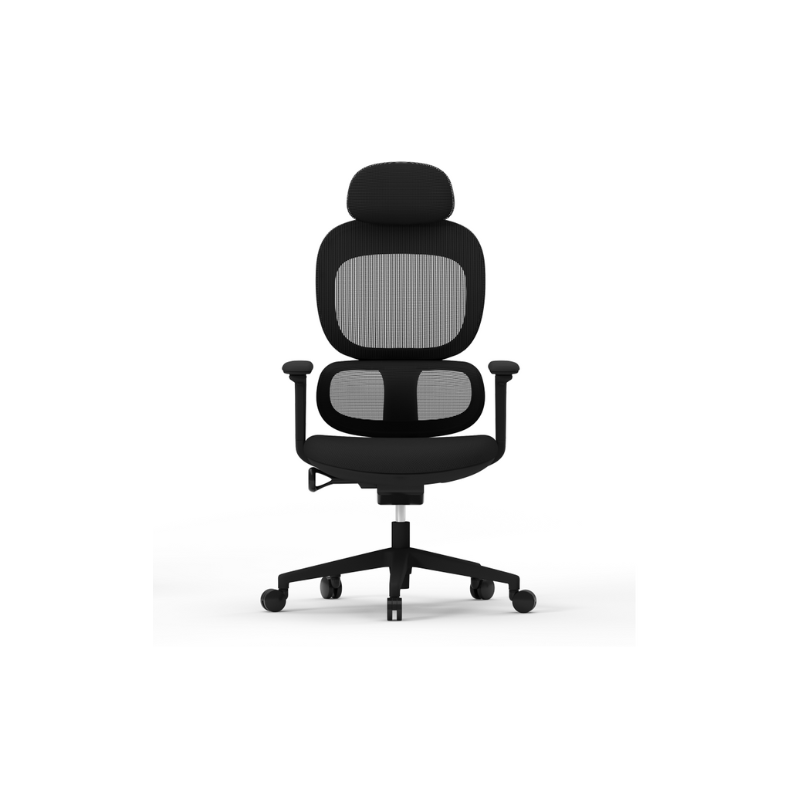
Meet&Co Budding Ergonomic Chair
The Meet&Co Ergonomic Office Chair is designed to blend comfort and functionality seamlessly, making it an ideal choice for extended work hours. Featuring adjustable lumbar support and a contoured mesh backrest, it promotes optimal spine alignment and airflow to keep you cool and comfortable throughout the day. The chair’s padded seat and adjustable armrests further enhance comfort and support, accommodating various body types and preferences. Built with a sturdy base and smooth-rolling casters, it ensures stability and easy maneuverability around your workspace. With its ergonomic design and affordability, the Meet&Co Ergonomic Office Chair offers a practical solution for creating a productive and comfortable work environment.
Setting up your computer chair properly is crucial for maximizing comfort and minimizing strain during long hours of sitting. Here are some essential tips:
By following these tips, you can optimize your workstation setup and ensure your computer chair supports your comfort and productivity throughout the day.

best computer chair for long hours
To extend the lifespan and effectiveness of your desk chair, follow these maintenance and care tips:
By implementing these maintenance and care practices, you can prolong the life of your computer chair, ensure it continues to provide optimal comfort and support, and reduce the need for repairs or replacements over time.
Choosing the best computer chair for long hours is not just about comfort; it’s a decision that impacts your health and productivity. Throughout this guide, we’ve explored the importance of ergonomic design, highlighted key features to look for in a chair, and discussed the significant health benefits of using a proper computer chair. Whether you’re a professional spending hours at a desk, a gamer immersed in intense sessions, or a student studying diligently, investing in a chair that supports your body and promotes good posture is crucial. By prioritizing comfort, durability, and ergonomic support, you can create a workspace that enhances your well-being and efficiency. Remember to set up your chair correctly, maintain it regularly, and take breaks to stretch and move—these small actions can make a big difference in how you feel and perform every day. Ultimately, choosing the right computer chair is an investment in your long-term health and comfort, ensuring you can work and play comfortably for years to come.

In any waiting area, whether it’s a medical office, corporate lobby, or hotel lounge, the seating plays a crucial role in creating a welcoming and comfortable atmosphere for visitors. A well-chosen waiting room sofa not only enhances the aesthetic appeal of the space but also contributes significantly to the overall experience of those waiting. From providing comfort during longer waits to accommodating varying numbers of guests, selecting the right waiting room sofa requires careful consideration of factors ranging from design and durability to functionality and cost-effectiveness.

waiting room sofa
When it comes to waiting room sofas, there are several types to choose from, each offering unique benefits suited to different environments and preferences:
Standard sofas are a traditional choice for waiting rooms, typically designed to seat two to three people comfortably. They come in various styles, from classic to contemporary, and are often upholstered in durable fabrics or leather for easy maintenance.
Ideal for: Healthcare facilities, reception areas, and corporate offices where a classic and versatile seating option is needed.
Sectional sofas offer flexibility with their modular design, allowing you to create customized seating arrangements that fit the layout of your waiting room. They can include chaise lounges, ottomans, or additional seating units depending on the space available.
Ideal for: larger waiting areas or spaces with irregular layouts, sectional sofas provide ample seating while maximizing comfort and style.
Loveseats and armchairs are compact alternatives to larger sofas, making them perfect for smaller waiting rooms or cozy corners. They provide comfortable seating for one to two individuals and can be paired with other seating options for a cohesive look. Available in a variety of designs and upholstery options, loveseats and armchairs offer a blend of comfort, style, and space efficiency.
Understanding these different types of waiting room sofas allows you to assess which option best meets your specific needs in terms of space, style, and functionality. In the next section, we will delve deeper into the factors you should consider when choosing a waiting room sofa to ensure it aligns perfectly with your requirements and enhances the overall ambiance of your waiting area.
Choosing the perfect waiting room sofa involves more than just selecting a piece of furniture that fits the space. It’s important to consider factors that contribute to both comfort and durability, as well as how well the sofa integrates with the overall aesthetic of your waiting area.
When evaluating the comfort of a waiting room sofa, consider the following:
A waiting room sofa should be durable enough to withstand frequent use and maintain its appearance over time. Key considerations include:

Meet&Co Office Furniture High-back sofa pods
Beyond comfort and durability, practical considerations play a crucial role in selecting the right waiting room sofa:
By carefully considering these factors and practical considerations, you can choose a waiting room sofa that not only meets the functional needs of your space but also enhances the comfort and experience of visitors. In the next section, we will explore specific styles and designs of waiting room sofas to help you find the perfect match for your waiting area.

Meet&Co Office Furniture Fabric modular sofas
Choosing a waiting room sofa with additional features and accessories can enhance its functionality and appeal. Consider the following features when selecting your sofa:

modular sofa couch
When selecting a waiting room sofa, budget and cost considerations play a significant role in decision-making. Here are some factors to keep in mind:

waiting room sofa
Navigating the process of purchasing a waiting room sofa involves several considerations and steps to ensure you make the right choice for your space:
Choosing the perfect waiting room sofa requires careful consideration of factors such as comfort, durability, style, and practicality. By evaluating these aspects and understanding your specific needs, you can select a sofa that enhances the ambiance of your waiting area while providing comfort and functionality for guests.
A well-chosen waiting room sofa not only serves as a comfortable seating option but also contributes to creating a welcoming environment that reflects your organization’s professionalism and care for visitors. Whether you opt for a standard sofa, sectional configuration, or space-saving loveseat, prioritize quality craftsmanship and ergonomic design to ensure long-term satisfaction and usability.
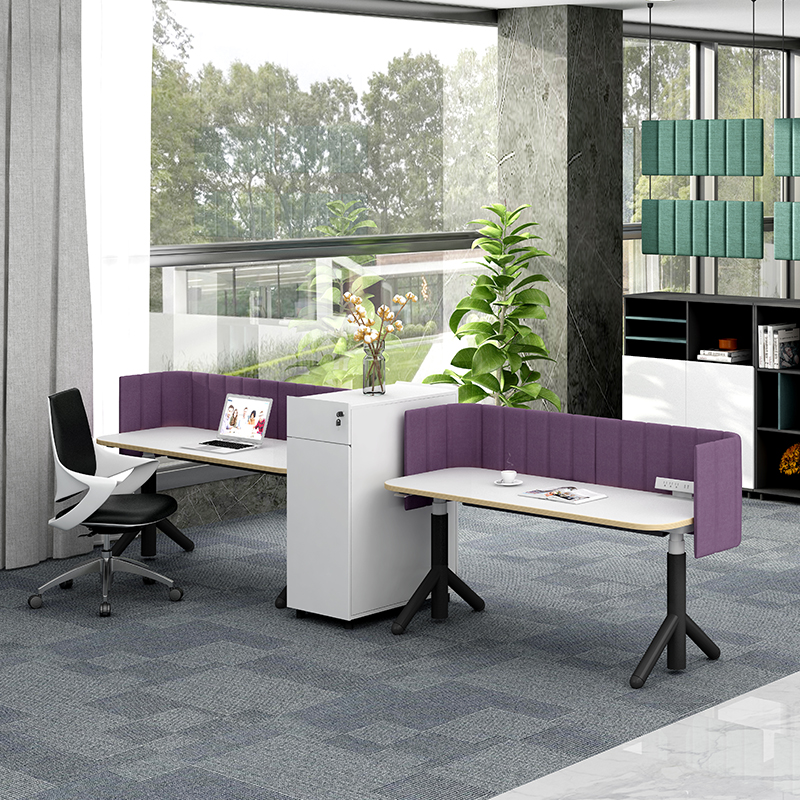
In today’s dynamic workplace environment, the demand for versatile and ergonomically sound office furniture is more prevalent than ever. Among the most pivotal developments in office furnishing are modular adjustable workstations, which offer unparalleled flexibility and comfort to meet the diverse needs of modern professionals. These innovative setups are not just a trend but a necessity for creating a productive and adaptable workspace.
Modular adjustable workstations are designed to cater to various tasks and individual preferences, making them ideal for environments where no two days are the same. In this guide, we will delve into the multiple benefits and features of these workstations, helping you understand why they have become essential in contemporary office layouts. Whether you are setting up a new office or upgrading your current space, this guide will assist you in selecting the best modular adjustable workstation that aligns with your professional demands and personal comfort.

modular adjustable workstations
Modular adjustable workstations are versatile office furniture pieces designed to be customized in layout and height settings to suit different work preferences and tasks. These workstations typically consist of components that can be rearranged or adjusted independently, offering a personalized workspace that can evolve with the needs of the user.
In a world where work tasks can vary drastically from one hour to the next, having a workspace that can adapt to different activities is crucial. Modular adjustable workstations offer the flexibility to configure spaces for individual work, collaborative projects, or client meetings, all within the same furniture setup. This adaptability not only enhances productivity but also ensures that the investment in office furniture meets a broad range of needs over time.
Understanding the foundational elements and variations of modular adjustable workstations sets the stage for exploring their benefits more deeply, which we will cover in the next section. This knowledge is essential for anyone looking to enhance their workspace with furniture that promotes both efficiency and well-being.

Meet&Co Office Furniture Electirc Standing Desk
Modular adjustable workstations are not just a modern office trend; they are strategic investments that can significantly enhance productivity, health, and space utilization in the workplace. Here, we delve into the multiple advantages these innovative setups offer.
The combination of ergonomic benefits, space efficiency, versatility in collaboration and privacy, integration with technology, sustainability, and aesthetic adaptability makes modular adjustable workstations an essential element of any modern office. These benefits underscore why selecting the right workstation is a critical decision for businesses aiming to optimize their work environments for maximum productivity and employee satisfaction.
Once you have selected the ideal modular adjustable workstation for your needs, ensuring proper installation and regular maintenance is crucial for maximizing its benefits and longevity. This section provides practical advice on setting up your new workstation and keeping it in top condition.
By following these installation and maintenance tips, you can ensure that your modular adjustable workstation remains a functional and inviting part of your office landscape for years to come. Proper care and regular upkeep will not only extend the life of your investment but also enhance the daily work experience of those who use it.

Meet&Co Office Furniture Sit to Stand Modular Desksa
Choosing the right modular adjustable workstations is more than a simple purchase; it’s an investment in the health, productivity, and satisfaction of your employees. By considering the specific needs of your workplace, the physical and technological requirements of your team, and the overall aesthetics and budget, you can select a workstation that not only fits your current needs but also adapitates to future changes and advancements.
As you navigate the selection process, remember that the best workstation is one that provides flexibility, supports wellness, and enhances productivity. Keep an eye on future trends to ensure that your choice remains relevant and beneficial in the long term. Investing in high-quality, adaptable workstations will not only improve the daily operations of your workplace but also contribute to a more dynamic, efficient, and enjoyable work environment.

In the fast-paced, dynamic environment of modern workplaces, the importance of ergonomic commercial office furniture cannot be overstated. As businesses strive to enhance productivity and employee satisfaction, investing in ergonomic furniture emerges as a crucial strategy. Ergonomically designed office furniture is not just a trend but a necessity that significantly impacts employee well-being, health, and overall efficiency. By prioritizing ergonomics, businesses can reduce the risk of work-related injuries, boost morale, and create a more comfortable and productive workspace. This blog will delve into the fundamentals of ergonomic office furniture and why it is indispensable in today’s corporate landscape.

ergonomic office furniture
Ergonomics, derived from the Greek words “ergon” (work) and “nomos” (laws), is the science of designing and arranging things people use to ensure safe and efficient interaction. In the realm of office furniture, ergonomics focuses on creating environments that support the natural posture and movements of the human body.
Proper ergonomic design is crucial because it minimizes discomfort and reduces the risk of various health issues such as repetitive strain injuries (RSIs), musculoskeletal disorders (MSDs), and chronic back pain. The basic principles of ergonomic design include adjustability, support, and user-centric customization. For instance, ergonomic office chairs are designed to provide ample lumbar support, adjustable seat heights, and armrests that align with the user’s natural posture, thereby enhancing comfort and efficiency.
By incorporating these principles into office furniture, businesses can ensure that their employees maintain proper posture, experience less fatigue, and ultimately, increase their productivity. Ergonomic furniture is not just about comfort; it’s about creating a workspace that allows employees to perform at their best while reducing the risk of long-term health issues.
When it comes to office productivity and employee well-being, the importance of an ergonomic office chair cannot be overstated. Ergonomic office chairs are meticulously designed to support the body in a natural and comfortable position, thereby reducing the risk of chronic pain and musculoskeletal issues. Here are the key features to look for in ergonomic office chairs:
Using ergonomic chairs can lead to numerous health benefits, including reduced back pain, improved posture, decreased risk of neck problems, and increased comfort during long working hours. By investing in ergonomic office chairs, companies can enhance employee well-being, reduce absenteeism due to health issues, and boost overall productivity.
Ergonomic desks and workstations are essential components of a healthy and productive office environment. These pieces of furniture are designed to support the natural posture of the body, accommodate various working preferences, and reduce the risk of musculoskeletal disorders. Here is an in-depth look at the importance and features of ergonomic desks:
By incorporating ergonomic desks and workstations, businesses can significantly reduce the risk of musculoskeletal disorders. These disorders are often caused by poor posture, repetitive movements, and prolonged static positions. Ergonomic furniture promotes a dynamic work environment where employees can move freely and maintain proper posture, reducing the likelihood of developing chronic conditions.

standing desk
In the realm of ergonomic office furniture, accessories play a crucial role in optimizing comfort and efficiency. These often-overlooked items can significantly enhance the ergonomic setup of your workspace, ensuring that employees remain comfortable and productive throughout the day.
By integrating these ergonomic accessories, businesses can create a more comfortable and efficient work environment. These small adjustments can lead to significant improvements in employee well-being and productivity.

ergonomic office desks and chairs
Selecting the right ergonomic office furniture is a critical investment in employee health and productivity. Here are several practical tips to guide you through this process:
By taking these factors into account, you can select ergonomic office furniture that not only enhances employee comfort but also aligns with your organization’s values and standards.
In today’s fast-paced work environment, investing in ergonomic office furniture is not just a luxury but a necessity. High-quality ergonomic furniture, including chairs, desks, and accessories, plays a pivotal role in enhancing employee well-being and productivity. By carefully selecting and integrating these elements, businesses can foster a healthier, more efficient, and happier workplace.
Are you ready to elevate your office environment? Contact Meet&Co Office Furniture today to explore our range of ergonomic solutions designed to meet the diverse needs of modern workplaces. Transform your office into a haven of comfort and productivity now!

Choosing the right student chair and desk set is more than just a matter of aesthetics; it’s a key investment in a student’s productivity and comfort. When we consider how many hours students spend seated while studying, it becomes clear that the quality of their furniture can significantly impact their learning experience and overall well-being. Ergonomically designed furniture not only supports healthy posture but also reduces physical strain, thereby enhancing focus and efficiency. In this blog, we will delve into the critical aspects of selecting the ideal student chair and desk set, covering everything from ergonomics to aesthetic considerations and providing you with a comprehensive guide to make an informed choice.
Ergonomics is the science of designing environments and products to fit the people who use them rather than forcing users to conform to the environment or product. When it comes to student furniture, ergonomics is crucial for several reasons. Firstly, ergonomic furniture is designed to support the body’s natural posture, which helps prevent musculoskeletal disorders and reduces physical strain. A poorly designed chair or desk can lead to discomfort and long-term health issues, such as back pain, neck strain, and even repetitive strain injuries.
Ergonomic principles in student furniture revolve around providing adjustable features that cater to the unique body dimensions of each student. This includes adjustable seat height, backrest angle, and desk height. The goal is to maintain a neutral body posture where the feet are flat on the floor, the knees are at a right angle, and the back is well-supported by the chair’s backrest. This alignment reduces the pressure on the spine and encourages better circulation, which in turn can improve concentration and learning efficiency.
In addition to physical health, ergonomics also impacts cognitive performance. A comfortable and supportive seating arrangement reduces distractions caused by discomfort, allowing students to focus more on their studies. By investing in ergonomically designed student furniture, you are promoting a healthier and more effective learning environment.
By understanding and applying ergonomic principles, you can make informed decisions when selecting student furniture that will contribute significantly to a student’s academic success and overall well-being.
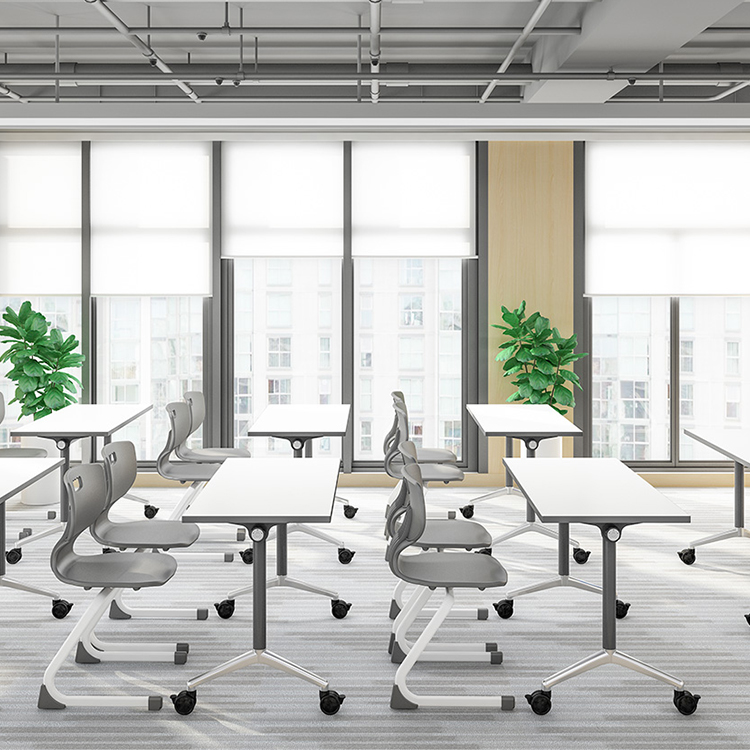
School Training Table
When selecting the perfect student chair and desk set, various essential features must be taken into account to ensure both comfort and productivity. Here’s a detailed look at what to consider:
Benefits: By adjusting the height, students can maintain a proper posture, reducing the risk of musculoskeletal issues.
Investing in furniture with these key features can significantly enhance a student’s comfort and productivity, laying the foundation for a successful learning experience.
There are several types of student chairs and desks available on the market, each with its own set of advantages and disadvantages. Here’s a comprehensive overview:
Choosing the right type of student chair and desk involves considering the specific needs and preferences of the student, as well as the available space and budget. Each type has its unique benefits, making it crucial to weigh the pros and cons before making a decision.
By understanding these key features and the types available, you can make an informed choice that will benefit the student’s learning environment and overall well-being.
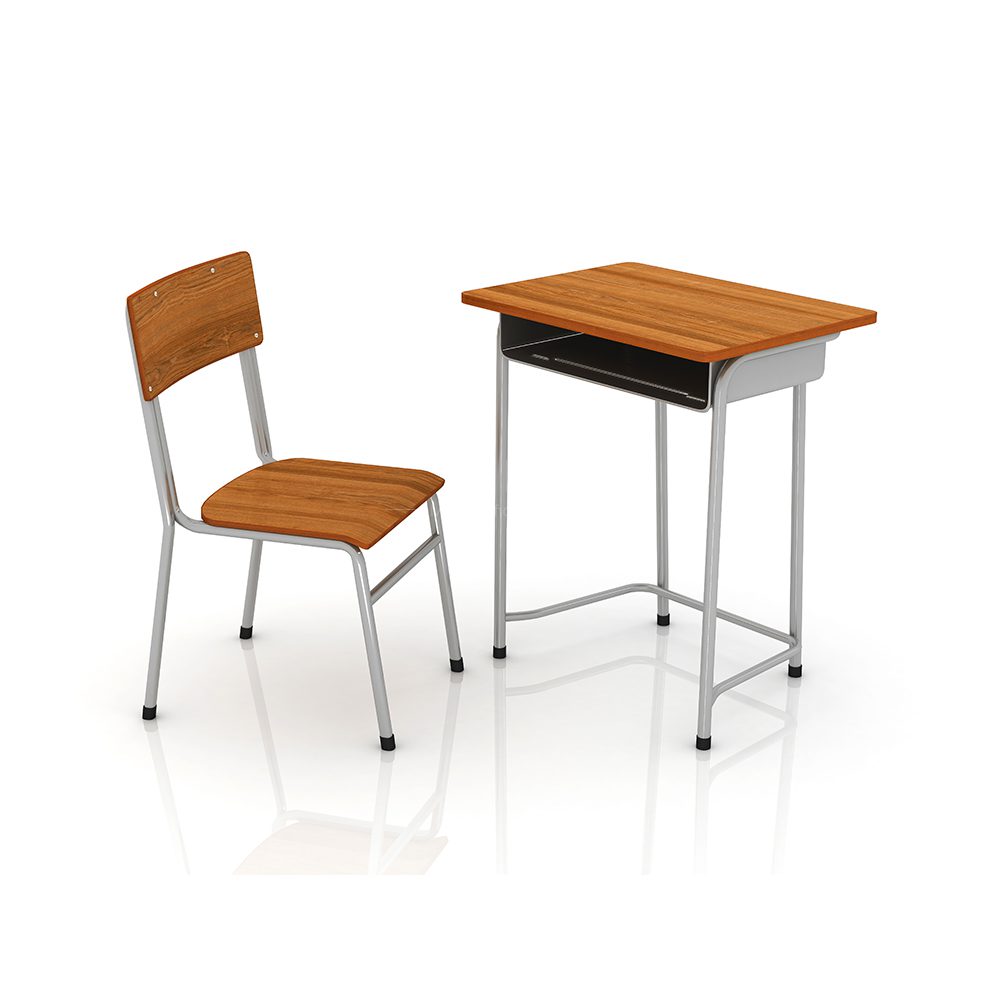
School chair and desk
Choosing the right size and type of furniture for students of different ages and body sizes is critical to their comfort and productivity. Here are guidelines and tips to ensure you make an informed decision:

School Training Desk
Balancing your budget with the need for high-quality furniture can be challenging, but these tips will guide you toward making a wise investment:
By considering these factors, you can ensure that you are selecting student furniture that is both appropriately sized and within your budget without compromising on quality.

School Training Table
In the realm of student furniture, aesthetic appeal, and design play a pivotal role in creating an engaging and inspiring study environment. The right design can significantly influence a student’s mood, motivation, and productivity. Here are several key aspects to consider when choosing aesthetically pleasing furniture for students:
By paying attention to these design elements, you can create a study environment that not only looks good but also supports the student’s academic endeavors and personal well-being.
Selecting the right student chair and desk set is more than just a purchase; it’s an investment in a student’s education and health. By understanding ergonomics, identifying key features, and considering age, size, and budget, you can make an informed choice that enhances productivity and comfort. Additionally, don’t overlook the importance of aesthetics and design, as these elements can greatly influence a student’s motivation and enjoyment of their study space.
Ready to transform your student’s study environment? Explore our range of ergonomic and stylish student furniture today at Meet&Co Office Furniture. Join us in creating healthy, happy, and productive learning spaces!

In today’s era of dynamic work environments, selecting the right commercial office desk goes beyond mere aesthetics and price tags. It is an intricate process that can significantly impact your team’s productivity, comfort, and overall office ambiance. The fundamental factors to consider include the choice of materials, design preferences, ergonomics, and budget constraints. This article will explore these considerations in detail to help you make an informed purchasing decision.

When it comes to office desks, the choice of material is pivotal as it directly influences the desk’s durability, upkeep, and aesthetic appeal. Here is an overview of the most common materials used in desk manufacturing:
Choosing the right material aligns with your office’s aesthetic design, budget considerations, and practical needs. By weighing the pros and cons of each material, you can select a desk that suits your unique circumstances.
The design of an office desk is not solely about aesthetics; it significantly impacts the functionality, productivity, and comfort of the workspace. Let’s delve into the various types of desk designs available in the market:
When it comes to office furniture, one size doesn’t fit all. Employee comfort and ergonomics should be at the forefront of your office desk selection process.
Selecting Ergonomically Sound Desks: Here are a few tips to keep in mind:
Remember, investing in ergonomically sound desks can greatly enhance productivity and employee satisfaction, making it a wise business decision.

When purchasing office desks, it’s essential to strike a perfect balance between cost and quality. It’s easy to be swayed by cheaper options, but it’s crucial to remember the long-term benefits of investing in quality furniture.
Choosing the right office desk involves considering several crucial factors, including the materials used, the design, ergonomics, and the balance between cost and quality. The right desk can enhance productivity, foster employee satisfaction, and contribute to a healthier, happier workspace. While it may require an initial investment, the benefits it brings to your organization are invaluable.
Meet&Co Office Furniture, with its extensive experience and unwavering commitment to quality and customer satisfaction, is your trusted partner in this journey. Browse through our wide selection of office desks and make your choice today. After all, a great workspace starts with the right desk.